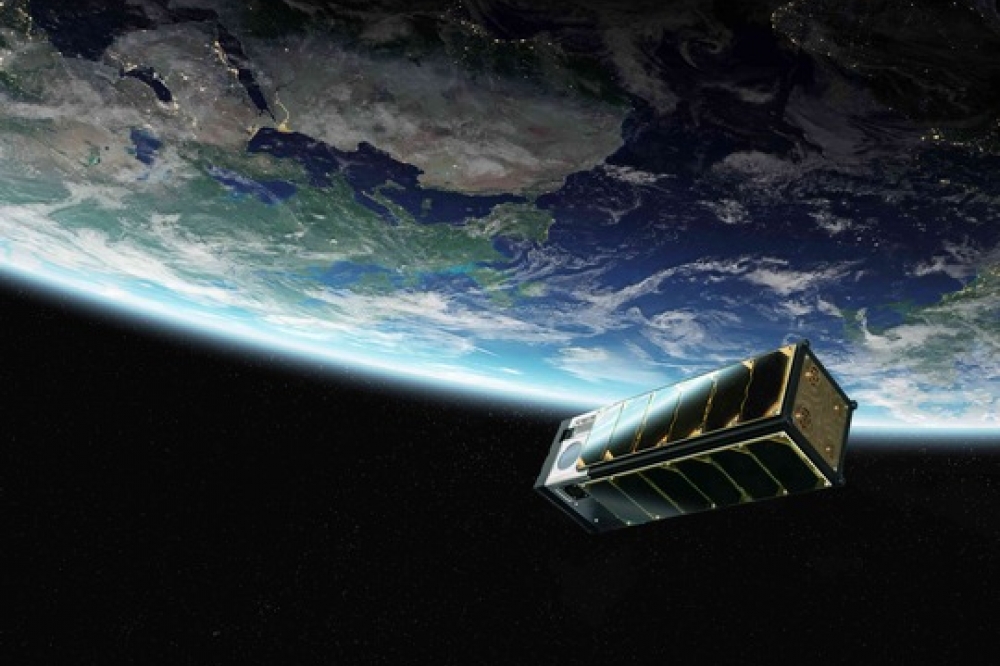Fraunhofer IAF targets W-band with BEACON project

Aim is to develop lowest noise W-band amplifier module for transferring extremely high data rates through space
To meet the world’s rapidly growing data consumption and increasing bandwidth requirements, satellite communications are shifting to higher frequencies. The W-band (75–110 GHz) is well suited for use in space, but technical components have been lacking so far.
For this reason, Fraunhofer IAF has launched the BEACON project: Together with researchers from RPG-Radiometer Physics, a novel W-band receive front-end module is to be realised as part of the ESA ARTES (Advanced Technology CubeSat-based W-band channel measurements) program. The goal is to develop a technology that is lower in noise than any previous W-band amplifier module and thus enables the transfer of extremely high data rates through space.
The Fraunhofer Institute for Applied Solid State Physics IAF, together with RPG Radiometer Physics GmbH, has taken up this challenge in the project 'BEACON—W-band Integrated Active Receive Front-End': The project partners are developing an integrated active W-band receive frond-end with an operating frequency of 81 to 86 GHz that will enable extremely high data rates or long-distance data transmission with low power consumption.
Minimal noise at high data throughput
The receive module is based on Fraunhofer IAF’s extremely low-noise MMIC technology. “Fraunhofer IAF has done tremendous development work in the mHEMT process over the past years and has acquired a core competence in developing amplifiers with the lowest noise worldwide. Based on this, the project aims to reduce the noise figure to below 3.5 dB and thus significantly improve the state of the art,” explains Philipp Neininger, project coordinator and researcher at Fraunhofer IAF.
In addition, the receive module is designed to isolate left- from right-hand circular polarisation and amplify them with two separate channels (LHCP and RHCP), which serves to effectively double data throughput.
A major challenge in the BEACON project is the novel arrangement of components on the very small module area. The new approach involves integrating a large number of functions within a very small footprint: These include the polarizer, waveguide transitions to two individual amplifiers, two coaxial output connectors and the associated DC circuitry. “The combination of these features—extremely low noise, two different polarizations and an innovative array—brings an enormous technological advance in the field of W-band components,” Neininger summarises the project proposal.
W-band data transmission from space already successfully tested
Only last year, satellite signals in the W-band frequency range were received from space for the first time. The W-Cube nanosatellite began its journey to polar orbit aboard a Falcon 9 rocket in the summer of 2021 and has since been successfully transmitting satellite signals to Earth at 75 GHz from an altitude of 500 kilometers. For this mission, Fraunhofer IAF had already developed the transmitter module of the satellite as well as the receive module of the corresponding ground station.
Joint project ARTES
The development of the W-Cube took place in the course of the joint project ARTES consisting of: JOANNEUM RESEARCH (project coordinator), Fraunhofer IAF, LC Technologies (LCT), Millimetre Wave Laboratory of Finland (MilliLab), Reactor Space Lab Oy (RSL), the University of Stuttgart and the Katholieke Universiteit Leuven.
During the first two successfully completed project phases, the nanosatellite and a corresponding ground station were developed and built, which are now collecting data for the exploitation of the Q and W band from low Earth orbit (LEO) in the third project phase. Fraunhofer IAF developed the high-frequency front-ends for the satellite and the ground station, including Medium Power Amplifiers (MPAs), Low Noise Amplifiers (LNAs), frequency multipliers and mixers.
The project is supported by the European Space Agency (ESA) and funded by the participating countries Austria, Finland, Portugal and Germany. On the German side, the German Aerospace Center (DLR) backs the project.


































